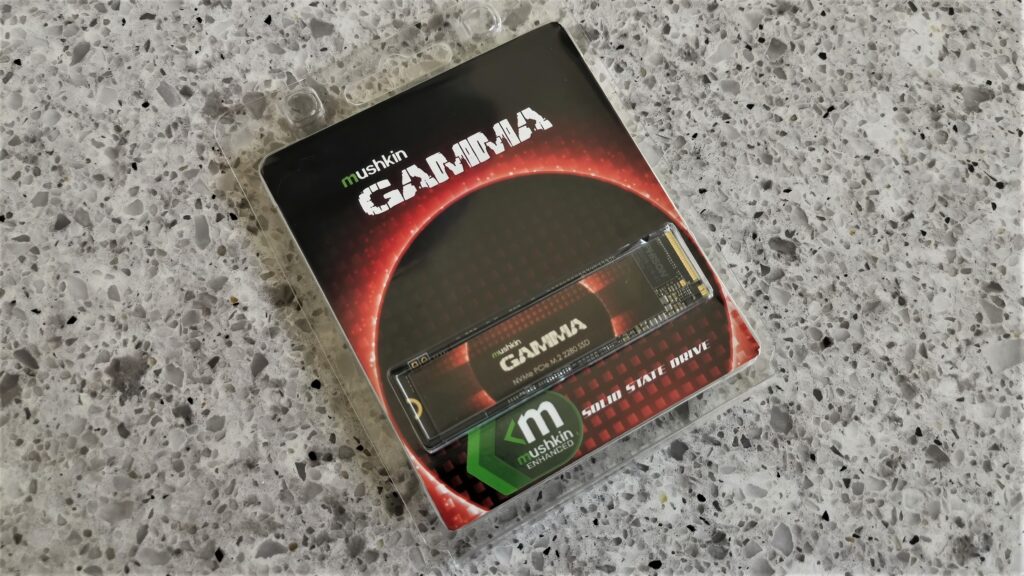Mushkin has introduced a new SSD and it is a PCIe 4.0 SSD, aptly named the Mushkin Gamma. The Mushkin Gamma is based on the ever popular Phison E18 NVMe Gen 4 controller and reaches speeds above 7GB/s. Since the introduction of PCIe 4.0 some time ago, we have really seen three levels of Gen 4, these being low power and performing in the area of 3-4GB/s, those that can reach 5GB/s and then what we might term as the upper tier which can reach, and exceed data speed of 7GB/s.
The Mushkin Gamma is available in one and two terabyte capacities, is a PCIe 4.0 NVMe M.2 SSD of the standard 2280 (80mm) length, and relies on the NVMe 1.4 protocol. Performance for the 2TB version we are testing today is listed at 7175MB/s read and 6800MB/s write with up to 640K read IOPS and 630K write IOPS at low 4K disk access. It has a 5-year limited warranty.
Looking at the Mushkin Gamma M.2 SSD, it has an attractive red and black branding sticker reflective of the Gamma name, and this is a two sided SSD. Its firmware consists of the Mushkin Enhanced Data Protection Suite (MEDS) which includes built-in 4th Gen LDPC ECC, end-to-end data protection, internal SRAM ECC/parity protection, SmartECC, thermal monitoring, AES 128/256-bit hardware encryption and enhanced power management.
Looking at the PCB with the branding sticker removed, we immediately recognized that this SSD is the spitting image of the Corsair MP600 Pro Gen 4 SSD with respect to its components and layout. It has the Phison PS5018 E18 NVMe controller, along with four packages of Micron 96-Layer 3D TLC NAND flash memory and a 1GB chip of SKHynix DDR-22666 DRAM cache on each side of the PCB.
This is a double sided SSD with a total of eight NAND packages that have a RAW value of 256GB each, the final formatted capacity of this SSD being 1863GB.
MSRP for the Mushkin Enhanced Gamma Gen 4 SSD is $259.99 for the 1TB and $499.99 for the 2TB version. Check Amazon for pricing.
 The SSD Review The Worlds Dedicated SSD Education and Review Resource |
The SSD Review The Worlds Dedicated SSD Education and Review Resource | 


How long can I write at the write speed of 6.8GB/s? Until the SSD is fully written or just a few seconds ?
I have this feeling that you already know the answer to that and it would be one heck of a challenge actually ever achieving a steady 6.8GB/s transfer write speed. This is the flash industry theme, however, where the SSD is advertised at its maximum potential and not steady state or speeds that will occur over linger file transfers. I would guess that this is because those speeds are so greatly affected by the data sample they are moving, whether it be media or much smaller OS files for instance. We could relate this to how vehicles advertise their high mileage couldn’t we? Thanks for jumping in!